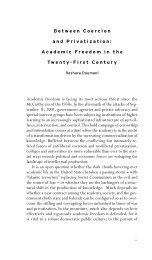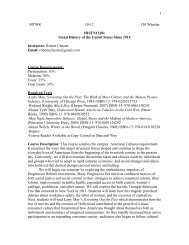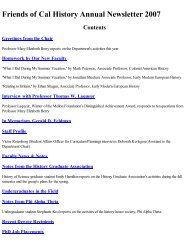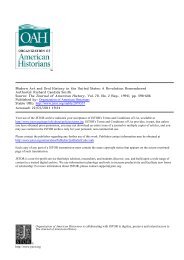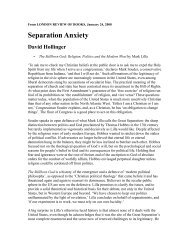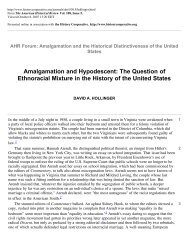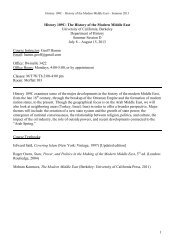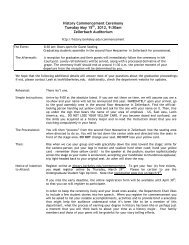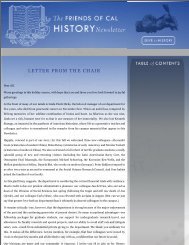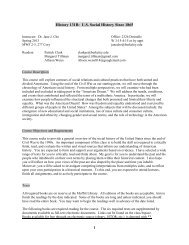My Grandmother and Other Stories: Histories of the Palestinians as ...
My Grandmother and Other Stories: Histories of the Palestinians as ...
My Grandmother and Other Stories: Histories of the Palestinians as ...
You also want an ePaper? Increase the reach of your titles
YUMPU automatically turns print PDFs into web optimized ePapers that Google loves.
Ihsan’s fa<strong>the</strong>r, H<strong>as</strong>an Bey al-Salih, inherited some <strong>of</strong> <strong>the</strong>se properties but most were<br />
tied to public endowments or le<strong>as</strong>ed l<strong>and</strong>. The family lived inside <strong>the</strong> Haram at <strong>the</strong><br />
entrance <strong>of</strong> Bab al-Silsilah in a three-story house that overlooked <strong>the</strong> Haram plaza<br />
from <strong>the</strong> e<strong>as</strong>t <strong>and</strong> <strong>the</strong> Wailing Wall <strong>and</strong> <strong>the</strong> Magharbeh Quarter from <strong>the</strong> south. H<strong>as</strong>an<br />
Bey lived for two decades in a childless marriage until his first wife prevailed on<br />
him (according to contemporary stories) to marry his second wife Nabiha al-Khalili–<br />
descended from Sheikh Ali al-Khalili, a prominent Jerusalemite <strong>and</strong> one <strong>of</strong> <strong>the</strong> first<br />
city dwellers to build a mansion outside <strong>the</strong> city walls in al-Baq’a neighbourhood.<br />
Nabiha bore him six children (three boys <strong>and</strong> three girls), <strong>of</strong> whom Ihsan w<strong>as</strong> <strong>the</strong><br />
eldest. 27 But H<strong>as</strong>an remained faithful to his first wife, Safiyyah, <strong>and</strong> continued to live<br />
with her after his second marriage in a separate apartment on <strong>the</strong> third floor <strong>of</strong> <strong>the</strong>ir<br />
home until she died during <strong>the</strong> first war.<br />
Ihsan grew up with Safiyyah <strong>as</strong> his second mo<strong>the</strong>r. He studied in Qur’anic schools<br />
by <strong>the</strong> Haram, <strong>and</strong> <strong>the</strong>n went to a local Nizamiyyah school for his primary education.<br />
After 1909, he joined Khalil Sakakini’s Dusturiyyah College, which <strong>of</strong>fered an Arab<br />
secular curriculum. To <strong>the</strong> end <strong>of</strong> his days, Ihsan considered Sakakini his mentor <strong>and</strong><br />
confidante, <strong>as</strong> is evident from his diary.<br />
When <strong>the</strong> general mobilization w<strong>as</strong> announced by Ottoman authorities in November<br />
1914, Ihsan w<strong>as</strong> conscripted <strong>and</strong> sent to central Palestine. He w<strong>as</strong> on <strong>the</strong> verge <strong>of</strong><br />
being sent to <strong>the</strong> Suez front in Sinai when he w<strong>as</strong> transferred to serve in Jerusalem’s<br />
military headquarters under <strong>the</strong> comm<strong>and</strong>er Ali Roshen Bey.<br />
Roshen Bey w<strong>as</strong> an Albanian <strong>of</strong>ficer whose administrative skills promoted him<br />
to become <strong>the</strong> military Qa’immaqam in charge <strong>of</strong> army logistics on <strong>the</strong> sou<strong>the</strong>rn<br />
front. His headquarters, known <strong>as</strong> ‘<strong>the</strong> Manzil’, were in <strong>the</strong> sequestered Notre Dame<br />
building opposite Jerusalem’s New Gate. 28 In that capacity he became <strong>the</strong> highest<br />
military <strong>of</strong>ficer in Ottoman Palestine, subject only to Jamal P<strong>as</strong>ha <strong>as</strong> comm<strong>and</strong>er<br />
<strong>of</strong> <strong>the</strong> fourth army. The latter w<strong>as</strong> b<strong>as</strong>ed in Dam<strong>as</strong>cus during <strong>the</strong> war <strong>and</strong> visited<br />
Jerusalem periodically.<br />
Ali Roshen’s <strong>of</strong>ficial title w<strong>as</strong> residence inspector (mufattish manzil) <strong>and</strong> his domain<br />
included <strong>the</strong> mobilization <strong>and</strong> training <strong>of</strong> soldiers for military <strong>and</strong> auxiliary t<strong>as</strong>ks, <strong>and</strong> <strong>the</strong><br />
overall administration <strong>of</strong> army logistics–food, munitions, <strong>and</strong> establishing army camps<br />
in sou<strong>the</strong>rn Palestine. 29 Omar al-Salih attributes <strong>the</strong> initial success <strong>of</strong> <strong>the</strong> Ottomans on<br />
<strong>the</strong> Egyptian front to <strong>the</strong> organizational skills <strong>of</strong> Roshen Bey. 30 Ali Roshen remained<br />
in Jerusalem to <strong>the</strong> very end, where he directed a battalion <strong>and</strong> fought tenaciously–<br />
according to an eyewitness account–against General Allenby’s advancing army in Nebi<br />
Samuel, a strategic area north <strong>of</strong> Jerusalem. 31 He w<strong>as</strong> l<strong>as</strong>t seen with retreating fighters<br />
in <strong>the</strong> village <strong>of</strong> Jib. Aside from local contemporary sources, such <strong>as</strong> <strong>the</strong> Barghouti <strong>and</strong><br />
Jawhariyyeh memoirs, 32 very few records have been found that describe <strong>the</strong> fate <strong>of</strong><br />
[ 36 ] HISTORICAL FEATURES The Short Life <strong>of</strong> Private Ihsan



